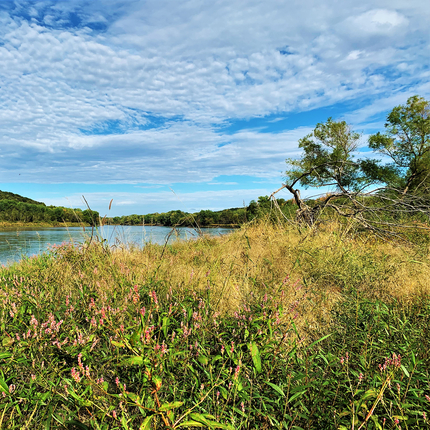By Cody Smith, former staff member | Published in The Cedar Rapids Gazette, Oct. 24, 2020
At a time when public health is front-and-center in the dialogue about COVID-19, the need for an investment of $1.37 billion in Iowa’s natural resources and outdoor recreation opportunities could not be more clear. With social distancing guidelines in effect, Iowans have been heading outdoors in droves, leading the Iowa Department of Natural Resources to report an increase of more than 1 million visits to state parks over this time last year. This is just the latest demonstration that Iowans are hungry for unlocking the potential of our natural resources.
Fortunately, a proposal sits in front of the Iowa Legislature to finally make the investments in our water bodies, land, and overall quality of life, which Iowans approved in 2010.
Had it been enacted this year, the Invest in Iowa Act—proposed in the 2020 legislative session by Gov. Kim Reynolds—would have generated $1.37 billion dollars in total funding over the next nine years to support a variety of water quality, flood mitigation, public lands, and outdoor recreation initiatives. Comparatively, this dwarfs the funding currently allocated to existing state programs by more than $542 million over the same time period.
The governor’s proposal is projected to direct $171.3 million each fiscal year to the Natural Resources and Outdoor Recreation Trust Fund, commonly referred to as IWILL. Even with the controversy surrounding proposed changes to the allocation formula and the replacement of more than $71 million in current state agency and other program funding each year with trust fund monies, more than $100 million of new, previously unavailable funds would be generated annually for parks, land and water trails, and watershed planning.
Through initiatives, such as the newly-proposed Local Conservation Partnership Program, the Invest in Iowa Act would provide much-needed support for locally-directed watershed efforts, county conservation initiatives, and other community-based projects.
Watershed management authorities (WMAs), which are cooperative intergovernmental partnerships between cities, counties, and soil and water conservation districts to improve water quality and reduce flooding impacts, would also be among the many beneficiaries. Unique to WMAs is their ability to bring together all stakeholders within a watershed, including farmers, small business owners, and local officials to set goals and develop a road map to cleaner water and flood resiliency.
Currently, there is only limited, and in some cases zero, state funding dedicated to these efforts. By funneling $171.3 million each year to on-farm conservation, community-led efforts, the construction of trails, and improvement of water bodies in Iowa, state lawmakers have the opportunity put Iowa’s communities in the driver’s seat as the state navigates the road to economic recovery, post COVID-19.
Regardless of political ideology or zip code, every Iowan benefits from an additional $100 million a year to conserve Iowa’s natural resources, promote public health, and stimulate local economies. A decade after Iowa voters approved IWILL on the ballot, we have the opportunity to arise from the competing crises we face with renewed stewardship of our natural resources and a promise which achieves the greatest possible return on investment for Iowa taxpayers.
Click here to read Iowa’s Path to Clean Water and Flood Resilient Communities.




